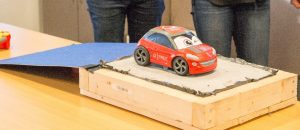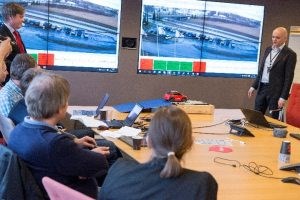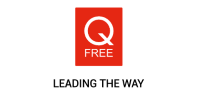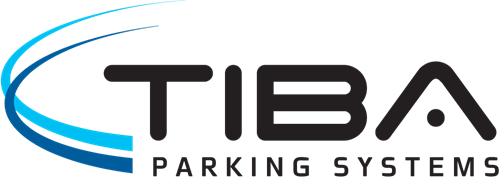New Smart Parking Sensor Pilot

Q-Free has launched a trial project for piloting a new smart parking sensor, in collaboration with one of the world’s largest mobile and communications providers, Telenor, and the Norwegian Public Roads Authority (NPRA). The pilot will test and utilise the new communications technology Narrow Band Internet of Things (NB IoT) with its parking sensors.
Q-Free, is one of the first in Europe to have its outdoor parking sensors communicating in real time with narrowband communications technology. The testing will take place at NPRA’s park and ride facilities at Ranheim, on the way into the city of Trondheim.
The parking sensor is a small and robust unit that is easily installed in the ground of each parking space, using radar-based technology to sense with 99% accuracy, whether a vehicle is present in that space. The sensor then transmits the information regarding parking space availability using NB IoT communications, which can be further sent to a variety of outputs, such as Variable Message Signs located near the parking site, or straight to end-users through websites or mobile phone applications.
The Pilot Launch
On 30th January 2017, Q-Free, Telenor and NPRA together launched the pilot with an initial presentation and live demonstration at Q-Free’s headquarters in Trondheim, before an onsite visit and inspection at the parking area.
 The pilot was purposefully launched in January, typically the month with the most extreme weather conditions, particularly in Trondheim where the sub-zero temperatures and high chances of snow and ice provide a good test of the technology’s robustness.
The pilot was purposefully launched in January, typically the month with the most extreme weather conditions, particularly in Trondheim where the sub-zero temperatures and high chances of snow and ice provide a good test of the technology’s robustness.
Telenor’s Business Manager for NB IoT, Sofia Tropé, envisions “great potential for Smart Cities, where in the past, technologies haven’t been able to offer reliable communications due to poor coverage, as well as issues with batteries draining too quickly”. The new parking sensor from Q-Free provides a strong communication outlet in real-time with a steadfast battery lifetime of 10 years.
Kristina Bergstad, Q-Free’s Vice President Service Line Parking, was equally optimistic about the launch of the pilot project, emphasising how “good it is for Q-Free that we can test this technology early on, and be ready to launch this kind of solution much sooner than our competitors, knowing that the tested equipment provides high accuracy and reliability. We are very excited to be part of this cooperation with Telenor where Q-Free’s smart parking sensors will interact directly with Telenor’s base stations”.
Smart and Easy Parking
The new smart parking sensor complements Q-Free’s current parking technology portfolio by allowing parking operators to monitor the occupancy of outdoor parking areas, as well as the indoor areas in parking houses. Robustly designed, the sensor is strong enough to withstand the weight of heavy vehicles consistently driving over it, as well as the impact of a snow plough clearing snow from the road.
“The main challenge for smarter city concepts today is that each project needs a separate infrastructure in place to ensure wireless communication from sensors to the back office systems. This leads to high installation and operational costs as well as potential frequency conflicts. This project will enable cellular-based NB IoT communication using existing infrastructure which will be a large step in the right direction towards realising next generation smarter city connectivity”, says Q-Free’s Research Director, Anders Hagen.
Q-Free is planning on further customer pilots to test larger volumes of the new parking sensors, in preparation for the products largescale release later this year. The Norwegian Public Roads Authority who spoke of the benefits of the new sensor at the launch, also expressed the importance of having accurate statistics for which parking spaces are available and when.
Vehicles searching for available parking leads to increased congestion and pollution in cities in addition to the frustration of not getting to an important meeting, doctor’s appointment or cinema show on time. The solution is to offer upfront information on available parking to the driver through mobile apps, websites, the vehicle’s information system or variable message signs close to the parking areas. This enables drivers to plan their journey and drive directly to an available parking space and even to pre-book and pre-pay as a convenience.
New Opportunities – NB IoT
Narrow Band Internet of Things enables a society in which even everyday objects have internet connectivity and are able to communicate their statuses and needs with end users. The result will be a world that is inherently smarter, however there is also a desire to make communications systems leaner and centralised.
The ambition from Telenor is to build a nationwide network for the Internet of Things. Telenor’s VP of Coverage, Bjørn Amundsen, states that the goal “is to have 99.9% of inhabited areas in Norway covered by the 4G network by the end of this year”. Petter Anglen, the Mobile Architect behind Telenor’s technology, continues; “the crucial aspect is that NB IoT can piggyback on the 4G network to use the same infrastructure and coverage”.
As a result, practically all parking spaces in Norway can have a fully functional smart parking sensor connected using NB IoT, with minimal installation costs, a secure connection, and maximum accuracy.
About Q-Free
Q-Free is a leading global supplier of ITS (Intelligent Transportation Systems) products and solutions. The company has approximately 460 employees, offices in 20 countries, and presence on all continents. Headquartered in Trondheim, Norway, Q-Free is listed on the Oslo Stock Exchange under the ticker QFR.




Comments
There are no comments yet for this item
Join the discussion